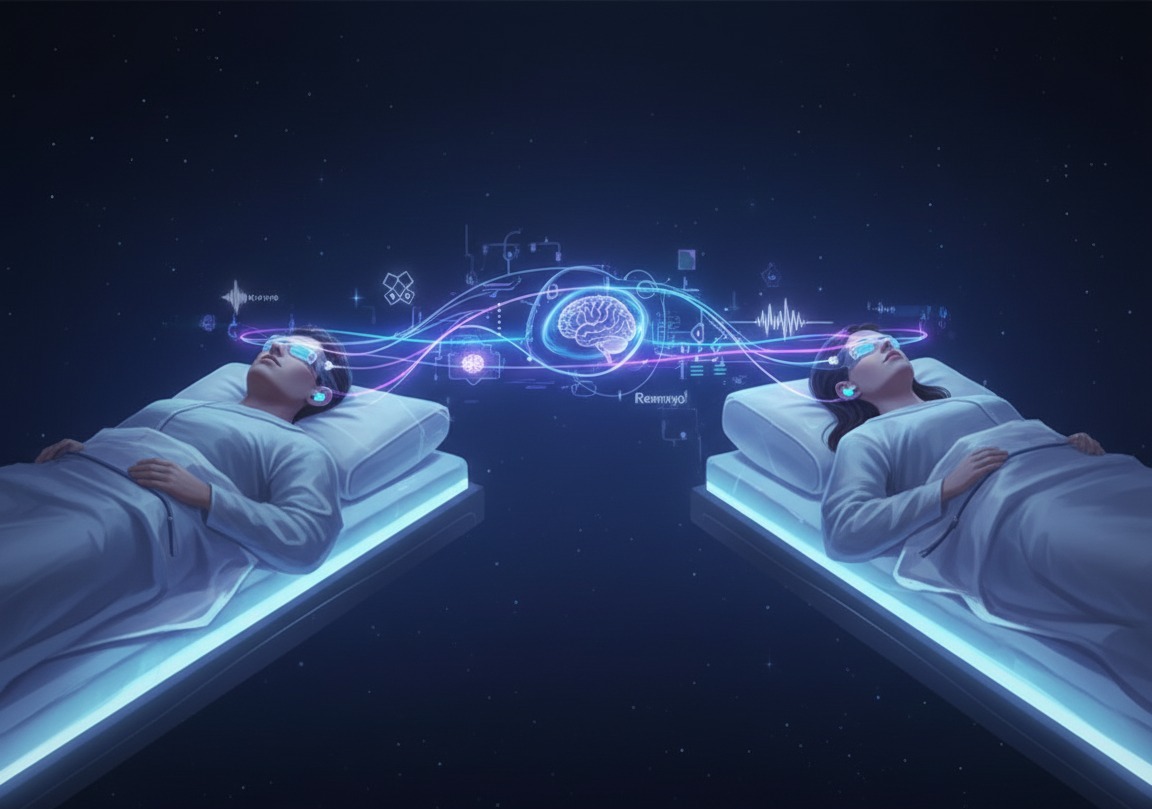Dream Dialogues: How REMspace Made the First Human-to-Human Communication in Dreams a Reality

Introduction: When Dreams Turn Into Conversations
For centuries, dreams have been seen as mysterious private worlds—fleeting stories our minds tell us while we sleep. But what if you could talk to someone while dreaming? What if two people could share words, emotions, or even ideas from within their dreams?
That once-impossible idea has just taken a real-world step forward. Bay Area startup REMspace claims to have achieved the first communication between two humans in dreams—a scientific breakthrough that could change how we understand consciousness, sleep, and human connection.
The Breakthrough: Talking Minds in REM Sleep
According to REMspace, two participants successfully exchanged a message while both were in REM sleep—the phase where most vivid dreaming occurs.
Here’s what happened:
- Both participants were trained lucid dreamers (they were aware they were dreaming).
- Once the first dreamer entered a lucid state, REMspace’s system sent a random word—in a special dream-language called Remmyo—via earbuds.
- The dreamer heard and repeated the word while asleep, which was recorded by muscle and eye-movement sensors.
- About eight minutes later, the second participant entered a lucid dream and received that same word.
- When both woke up, they confirmed the word matched—marking the first-ever human-to-human communication inside dreams.
While it was only a single word, this marks an extraordinary leap toward bridging the gap between two sleeping minds.
How REMspace Made It Possible
REMspace’s achievement blends neuroscience, technology, and lucid dreaming research. Their setup included:
- Brainwave and REM monitoring to detect when a participant entered lucid dreaming.
- A unique dream-language (Remmyo), created for short, easy-to-recognize sound patterns.
- Auditory stimulation (earbuds) to send cues into the dream without waking the sleeper.
- Facial EMG sensors to interpret dreamer responses through micro-movements and speech attempts.
Together, these tools enabled the world’s first “dream chat”—a term REMspace proudly uses for the experiment.
Why It Matters
This discovery has massive implications beyond curiosity. Here’s why scientists and futurists are paying attention:
1️⃣ A New Frontier of Consciousness Research
If communication within dreams is possible, it could help unlock deeper understanding of the sleeping mind, memory, and consciousness itself.
2️⃣ Therapeutic & Medical Potential
Dream communication could assist in treatments for nightmares, PTSD, or sleep disorders, allowing real-time interaction with patients during dreams.
3️⃣ Creative Collaboration
Imagine musicians, artists, or writers sharing ideas in a shared dream environment. REMspace believes “dream collaboration” could one day become a new form of co-creation.
4️⃣ Redefining Human Connection
For the first time, technology might let humans connect beyond the physical and digital—in the realm of dreams.
The Caution: Science Still Needs to Catch Up
While the headlines are exciting, experts urge patience.
- The experiment has not yet been peer-reviewed or independently replicated.
- The “conversation” was a single-word message, far from a full dialogue.
- Achieving reliable dream communication for everyone—not just expert lucid dreamers—remains a challenge.
Still, even skeptics agree: if verified, this could be a landmark moment in neuroscience and human communication.
The Future of Dream Communication
REMspace’s next goals include:
-
Developing real-time dream chats, not just delayed word transfers.
-
Making the technology accessible to everyday users, not just trained dreamers.
-
Exploring clinical and creative applications in therapy, art, and learning.
-
Publishing detailed data for the global research community to review.
In their words, “Dream communication could become the next great human frontier—just as AI transformed thinking, dreams could transform feeling.”
Conclusion: From Fiction to Reality
What was once pure science fiction is slowly becoming fact. If REMspace’s findings hold true, humanity may be on the verge of a new mode of communication—one that transcends time, space, and even consciousness.
As research continues, one thing is clear:
The future of connection may not just happen online—it might also happen in our dreams.







